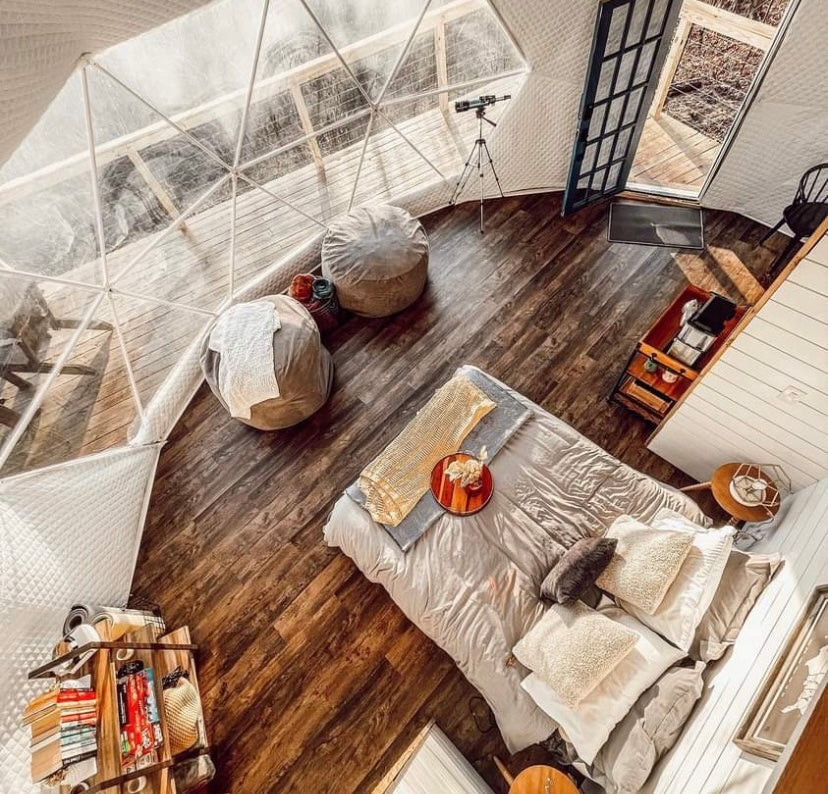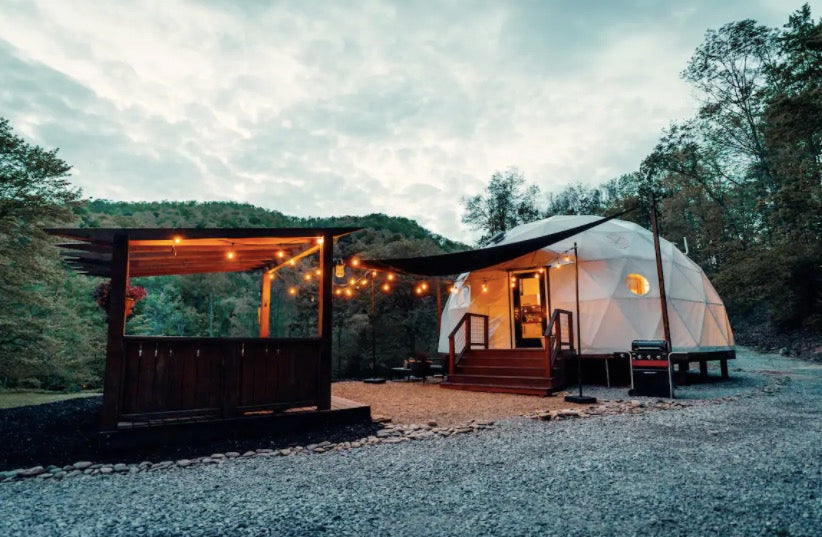One of the most essential parts of your Dome is the foundation. The foundation must provide a stable, long-lasting base capable of supporting the Dome's weight. Some common methods include wooden platforms, decks, and concrete pads.
When choosing a platform, you must consider your local topography, building codes, and your personal goals for the site. In this article, we will go over the best platforms and standard methods to build them.
Wooden Platform (flat build)
Wooden Platforms are an easy and cost-effective way to build a deck for your dome. You can find the materials at your local hardware store or lumberyard and even make it yourself!
This type of deck works best when it's 6 - 30 inches off the ground, but you should check with your local building codes first to ensure that building a deck in this way is allowed. The platform is more vulnerable to the topography of your environment the closer it is to the ground. You will need protection from moisture, so sealing and occasional maintenance are necessary. To further prevent condensation and mildew, build the platform close to the dome's diameter in a circle or pentadecagon shape and separate it from any exterior decks or walkways.
For this platform, you will need: Pier blocks, wooden joists, top and bottom plywood, galvanized nails, exterior varnish (optional), and a jig saw costing between $1600 - $2000.
Check out this helpful DIY video by Tractors & Cream
Wooden Platform (raised)
If you plan to live in your Dome and you're thinking about installing electrical wiring or running water through the structure, this might be your best option. A raised platform allows for electrical wiring, plumbing, and storage beneath the dome.
This method requires the assistance of a professional or someone with carpentry experience. Most raised platforms have concrete footings determined by your site, topography, and building codes. Consult with a contractor or structural engineer to determine the building requirements for your state.
Materials for this project will cost between $3500 - $4000, not including labor.
Find detailed DIY instructions for geodesic dome wood platforms here: https://tinyurl.com/woodplatforminstructions
Concrete Pad

Another common platform method for Geodesic Domes is a concrete pad. Concrete doesn't require much maintenance and is extremely durable. If you would like to build it yourself you may need a permit, but it is generally best to leave it to the professionals.
The slab thickness depends on topography and climate. A shallow, insulated foundation may be necessary for frost protection.
A 20ft Geodesic Dome concrete slab will cost anywhere from $1500 - $2200, including labor. The price can vary depending on grading and reinforcement materials.
Perimeter Boards
This method is best for domes with earthen floors. The perimeter board anchors your dome and keeps the exterior PVC cover off the ground. The perimeter board can also be used as a mold to lay tiles or pour concrete. Coat the concrete with marine varnish for easy cleaning.
When using perimeter boards as concrete forms, we recommend using pressure-treated, rot-resistant wood and leaving the boards in place to receive the shelter hem. Start 16-penny galvanized nails into the inside of the perimeter boards to secure them to the slab.

Portable Pie Piece or Star Method
The portable “Pie Piece” (16’, 20’, and 24’) and “Star” (30’ and 36’) methods allow the deck to be disassembled in sections and moved easily. You can take it apart, load it up and move it all in a day’s work. It costs a little more than the joist method and is more complex to build.

Conclusion
The anticipation of a brand-new glamping excursion may be enough to propel us headfirst into dome construction, but don't forget to take the necessary safety measures to make the most of this beautiful experience. Building a solid foundation is more crucial than any other aspect if you want your dome adventure to last for years to come.







